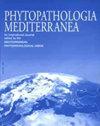智利核桃球孢菌科和双孢菌科的鉴定及其致病性
IF 1.9
3区 农林科学
Q2 AGRONOMY
引用次数: 12
摘要
核桃(Juglans regia)已成为智利的重要作物,占果树总面积的11.5%,仅次于葡萄。随着智利核桃产业的迅速扩张,年轻的果园面临着新真菌疾病出现的风险。木霉科和双孢菌科真菌是引起核桃木材病害的主要原因,表现为枯死、溃疡和枯萎病。2017年冬天,从瓦尔帕莱索和毛勒地区的不同果园采集了样本。对回收的真菌分离株进行培养,对其进行形态学表征,并使用DNA序列分析进行鉴定。在肉孢子虫科中鉴定出3个种(新纺锤球菌、多裂双孢菌、细裂双孢杆菌),在双孢菌科中鉴定了2个种(双孢双孢菌,澳大利亚双孢双胞菌)。致病性试验表明,细小猪笼草对核桃的攻击性最强。这项研究证实了在J.regia中存在致病性Botryosphaeriaceae和Diaporthaceae,这应该被认为是智利核桃产业发展的一个增加的风险。本文章由计算机程序翻译,如有差异,请以英文原文为准。
Identity and pathogenicity of Botryosphaeriaceae and Diaporthaceae from Juglans regia in Chile
English walnut (Juglans regia) has become an important crop in Chile, representing 11.5% of the total area of fruit trees, surpassed only by grapevine. As the Chilean walnut industry rapidly expands, young orchards are at risk from the emergence of new fungal diseases. Botryosphaeriaceae and Diaporthaceae fungi have been recognized as main causes of wood diseases in walnut, with symptoms of dieback, canker, and blight. In winter 2017, samples were collected from different orchards in Valparaíso and Maule regions. Fungal isolates recovered were cultured, characterized morphologically, and identified using DNA sequence analyses. Three species (Neofusicoccum parvum, Diplodia mutila, Diplodia seriata) were characterized in Botryosphaeriaceae and two (Diaporthe cynaroidis, Diaporthe australafricana) in Diaporthaceae. Pathogenicity tests showed that N. parvum was the most aggressive species to walnut. This study confirmed the presence of pathogenic Botryosphaeriaceae and Diaporthaceae in J. regia that should be considered an increasing risk for the growing Chilean walnut industry.
求助全文
通过发布文献求助,成功后即可免费获取论文全文。
去求助
来源期刊

Phytopathologia Mediterranea
生物-植物科学
CiteScore
4.40
自引率
8.30%
发文量
28
审稿时长
6-12 weeks
期刊介绍:
Phytopathologia Mediterranea is an international journal edited by the Mediterranean Phytopathological Union. The journal’s mission is the promotion of plant health for Mediterranean crops, climate and regions, safe food production, and the transfer of new knowledge on plant diseases and their sustainable management.
The journal deals with all areas of plant pathology, including etiology, epidemiology, disease control, biochemical and physiological aspects, and utilization of molecular technologies. All types of plant pathogens are covered, including fungi, oomycetes, nematodes, protozoa, bacteria, phytoplasmas, viruses, and viroids. The journal also gives a special attention to research on mycotoxins, biological and integrated management of plant diseases, and the use of natural substances in disease and weed control. The journal focuses on pathology of Mediterranean crops grown throughout the world.
The Editorial Board of Phytopathologia Mediterranea has recently been reorganised, under two Editors-in-Chief and with an increased number of editors.
 求助内容:
求助内容: 应助结果提醒方式:
应助结果提醒方式:


